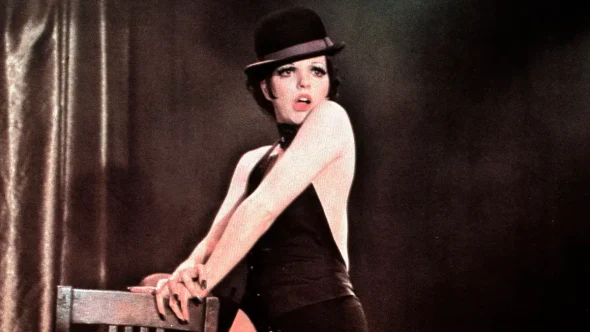
"I grew up with a father who was a filmmaker, but I never actually considered filmmaking for myself," says trans-nonbinary artist Noah Schamus, whose father is three-time Oscar nominee James Schamus (Crouching Tiger, Hidden Dragon and Brokeback Mountain). "I knew I liked watching Alfred Hitchcock, Todd Haynes, Pedro Almodóvar, and all the reality television that Bravo had to offer, but never considered that I would want to get behind the camera."
During their freshman year of college, Schamus enrolled in a class on film noir on a whim, where they learned to "enjoy watching films not to affirm my views, but to challenge me to think more deeply." Schamus recalls, "By the second class, I knew I wanted to be a film major. And by the third or fourth, I knew I wanted to be a filmmaker."
Their feature debut is Summer Solstice, an indie dramedy about a trans man who reconnects with an old friend who knew him pre-transition. "It feels exciting to be releasing Summer Solstice right now, because it feels like it's very much a part of this tapestry of contemporary trans films that are pushing the boundaries of trans representation to increasingly nuanced places," the Brooklyn-based writer-director explains.
"Summer Solstice follows an aspiring actor, Leo, who is stuck auditioning for trans roles that have clearly been written by cis folks who have certain ideas about what it means to be trans, like that transness is all about struggling with gender, or beginning their transition, or seeking approval from the cis people in their life," says Schamus. "I wanted to turn some of those tropes on their head: this is a film about someone who is very much settled into being trans, but is struggling in his career, and with his confidence and voice in his relationships, and in the world."
"In the time from conception to completion of this film, so many incredible trans films by trans filmmakers have come out that are also building new language around what a trans-directed film, or a trans character is," they add, "so while I hope my film will feel relevant and engaging no matter when someone watches it, I also hope that some of the struggles that Leo is having as a trans actor will feel increasingly like they come from a time capsule."
Below, Schamus shares with A.frame their five favorite films.

Written and Directed by: Sally Potter
I love this film so much, and with every rewatch — which happens at least once a year — I become less and less able to articulate why I am so moved by the film. I think so much of it has to do with how alive every element of the film feels, how you can feel the care and precision in every single frame. I discover something new about the film, about Orlando, about the beautiful easter eggs Sally Potter laid throughout the entire film that quietly inform the way the film feels. (There is a lengthy sequence, in the period that Orlando transforms from man into woman, in which every single extra is actually on-screen with their literal twin!) And of course, I love the gender-bending weirdness.

Directed by: Bob Fosse | Written by: Jay Allen
I don't even quite know where to start with this film, but I think its meditation on the ways in which so many of us are fixated on our personal dramas and dreams, feeling the pulse of violence just underneath the surface of our daily lives but largely ignoring it, is always resonant. I think I come back to the film often because I learn so much about shooting to edit from Bob Fosse's films, and I really hope I can one day emulate the muscularity of his directing style, especially in this film!

Written and Directed by: Cheryl Dunye
I often rewatch The Watermelon Woman when I feel creatively stuck, because of Cheryl Dunye's incredible ability to bring a sense of playfulness to the structure and form in this film, and also because it is just such a pleasure to watch. I also think Cheryl's (the fictional character) obsession with finding herself through finding this Black, lesbian actor from the 1930s/'40s, who has largely been erased from film history, is deeply resonant for me. I often look to queer and trans history and historical figures to root myself in my sense of sense, and I think a lot of the reasons why I want to make films is because of this desire to see my corner of the world reflected and explored outside of just my own corner.

Directed by: Claudia Weill | Written by: Vicki Polon
Claudia Weill so perfectly captures what it feels like to have to come of age again in your 20s. I had only seen the film at home, but a few weeks after wrapping production on Summer Solstice, I went to a screening of the film at Metrograph in New York. I remember sitting in the packed theater watching the final few minutes of the film and being overwhelmed by the intricacy and intimacy of the friendship Weill created in the film, and a sense of the real love she felt for these characters. It was beautiful to get to feel that so palpably with so many other people in a theater.

Directed by: Robert Altman | Written by: Michael Tolkin
I'm a sucker for "inside baseball" movies about the film industry, and this is currently my favorite — though this is subject to change! The eight minute opening shot, which sets up all of the various players, as it were, and the film's biting satire about the film industry and, more generally, power is a tightrope walk of choreography and comedy that Altman manages to make feel effortless. In the first two minutes of the shot, a character opines, "The pictures they make these days are all MTV, cut, cut, cut, cut. The opening shot of Welles' Touch of Evil of evil was six and a half minutes long," though almost immediately, he admits that it was maybe "three or four" minutes. Altman takes Welles' four minutes and raises him by an additional four minutes. The timing of the key moments in performance with zooms, pans, dollies, etc. is so tight, and I learn something new after every rewatch.







